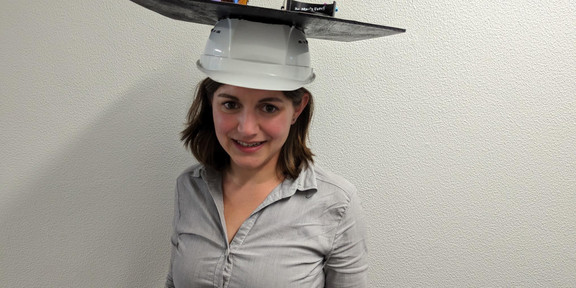Doctoral Defense Maria Evers

Purpose: Extrusion-spheronization is a common process to produce spherical pellets of uniform size and shape for pharmaceutical purposes. These pellets are well-suited for further processing into a multiparticulate dosage form.
The rounding of pharmaceutical pellets from extrudates is based on deformation, attrition, agglomeration and breakage, which can proceed simultaneously.
The size and shape distribution of a batch is influenced by how particles move inside the spheronizer. Upon collision, pellets exchange mass with each other, which also benefits the rounding process.
Aim of this research was to uncover the mechanisms that leads to mass transfer in combination with particle movements in the spheronizer. Additionally, a scaling model was developed to transfer the findings from a laboratory size spheronizer to industrial scale.
Methods: Particle movement at the spheronizer jacket was observed using particle image velocimetry (PIV). Mixing of colored particles in the spheronizer was used as a surrogate parameter for movements of particles not visible through the glass jacket of the spheronizer. A scaling model was developed and tested using three different spheronizers at varied loads and rotational speeds while observing the change of the particle size and shape over time. For experiments investigating mass transfer, the distribution of a tracer in the particle bed was observed for various spheronization durations. Additionally, differently sized and shaped granules were spheronized together and the evolution of the particle size and shape was determined.
Results: Rotational speed of the friction plate is the main influence for the necessary rounding time. Keeping the peripheral velocity of the friction plate constant leads to the same necessary rounding times in spheronizers with different diameters, despite higher average particle velocities in the larger spheronizer. This indicates that particle velocities and therefore the collision velocities of the particles with the spheronizer jacket are not the main driving force for the necessary rounding time.
Mass is transferred between pellets for the whole duration of the spheronization, indicating most mass is transferred during direct contact between pellets upon collision. Pellets larger than 2.5 mm in diameter tend to get smaller by either breakage, attrition of fines or by giving away mass. Pellets smaller than 1.5 mm agglomerate and receive mass upon collision with larger pellets.
Conclusion: A new mechanism of pellet formation was introduced. At the beginning of the spheronization process, extrudate strands undergo plastic deformation, especially when they are in close proximity to the friction plate. Additionally, fine fraction is generated. Some pellets might undergo breakage, other pellets continue to deform plastically into a dumbbell shape, as shown in figure 1. Fine fraction is attached to the dumbbells. Upon collision of two pellets, the pellets exchange mass, encouraging the transformation of the dumbbell to an ellipse. Larger pellets are more likely to give away more mass than they receive, especially if their diameter exceeds 2.5 mm. This size alignment is encouraged by agglomeration of pellets which size are short of approximately 1.5 mm. Finally, pellets with a monomodal size distribution are received.
